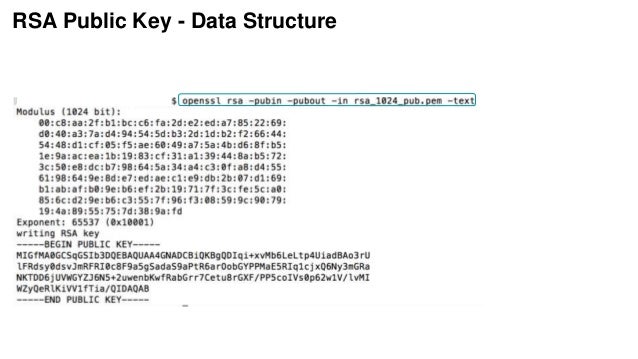Generate Rsa Private Key From P And Q In C++
Download and install the OpenSSL runtimes. If you are running Windows, grab the Cygwin package.
- RSA algorithm is an asymmetric cryptography algorithm which means, there should be two keys involve while communicating, i.e., public key and private key. There are simple steps to solve problems on the RSA Algorithm. Example-1: Step-1: Choose two prime number and Lets take.
- Generating RSA keys. The following steps are involved in generating RSA keys − Create two large prime numbers namely p and q. The product of these numbers will be called n, where n= p.q. Generate a random number which is relatively prime with (p-1) and (q-1). Let the number be called as e. Calculate the modular inverse of e.
- Oct 05, 2007 Generating public keys for authentication is the basic and most often used feature of ssh-keygen. Ssh-keygen can generate both RSA and DSA keys. RSA keys have a minimum key length of 768 bits and the default length is 2048. When generating new RSA keys you should use at least 2048 bits of key length unless you really have a good reason for using a shorter and less secure key.
How do I calculate the private key in RSA? Ask Question Asked 6 years, 4 months ago. Active 1 year, 4 months ago. Viewed 34k times 3. 1 $begingroup$. Is it safe to re-use the same p and q to generate a new pair of keys in RSA if the old private key was compromised? In this chapter, we will focus on step wise implementation of RSA algorithm using Python. Generating RSA keys. The following steps are involved in generating RSA keys − Create two large prime numbers namely p and q. The product of these numbers will be called n, where n= p.q. Generate a random number which is relatively prime with (p-1).
OpenSSL can generate several kinds of public/private keypairs.RSA is the most common kind of keypair generation.[1]
Other popular ways of generating RSA public key / private key pairs include PuTTYgen and ssh-keygen.[2][3]
Generate an RSA keypair with a 2048 bit private key[edit]
Execute command: 'openssl genpkey -algorithm RSA -out private_key.pem -pkeyopt rsa_keygen_bits:2048'[4] (previously “openssl genrsa -out private_key.pem 2048”)
e.g.
Make sure to prevent other users from reading your key by executing chmod go-r private_key.pem afterward.
Extracting the public key from an RSA keypair[edit]
Execute command: 'openssl rsa -pubout -in private_key.pem -out public_key.pem'
e.g.
A new file is created, public_key.pem, with the public key.
It is relatively easy to do some cryptographic calculations to calculate the public key from the prime1 and prime2 values in the public key file.However, OpenSSL has already pre-calculated the public key and stored it in the private key file.So this command doesn't actually do any cryptographic calculation -- it merely copies the public key bytes out of the file and writes the Base64 PEM encoded version of those bytes into the output public key file.[5]
Viewing the key elements[edit]
Execute command: 'openssl rsa -text -in private_key.pem'
All parts of private_key.pem are printed to the screen. This includes the modulus (also referred to as public key and n), public exponent (also referred to as e and exponent; default value is 0x010001), private exponent, and primes used to create keys (prime1, also called p, and prime2, also called q), a few other variables used to perform RSA operations faster, and the Base64 PEM encoded version of all that data.[6](The Base64 PEM encoded version of all that data is identical to the private_key.pem file).
Password-less login[edit]

Often a person will set up an automated backup process that periodically backs up all the content on one 'working' computer onto some other 'backup' computer.
Because that person wants this process to run every night, even if no human is anywhere near either one of these computers, using a 'password-protected' private key won't work -- that person wants the backup to proceed right away, not wait until some human walks by and types in the password to unlock the private key.Many of these people generate 'a private key with no password'.[7]Some of these people, instead, generate a private key with a password,and then somehow type in that password to 'unlock' the private key every time the server reboots so that automated toolscan make use of the password-protected keys.[8][3]
Further reading[edit]
- ↑Key Generation
- ↑Michael Stahnke.'Pro OpenSSH'.p. 247.
- ↑ ab'SourceForge.net Documentation: SSH Key Overview'
- ↑'genpkey(1) - Linux man page'
- ↑'Public – Private key encryption using OpenSSL'
- ↑'OpenSSL 1024 bit RSA Private Key Breakdown'
- ↑'DreamHost: Personal Backup'.
- ↑Troy Johnson.'Using Rsync and SSH: Keys, Validating, and Automation'.
- Internet_Technologies/SSH describes how to use 'ssh-keygen' and 'ssh-copy-id' on your local machine so you can quickly and securely ssh from your local machine to a remote host.
